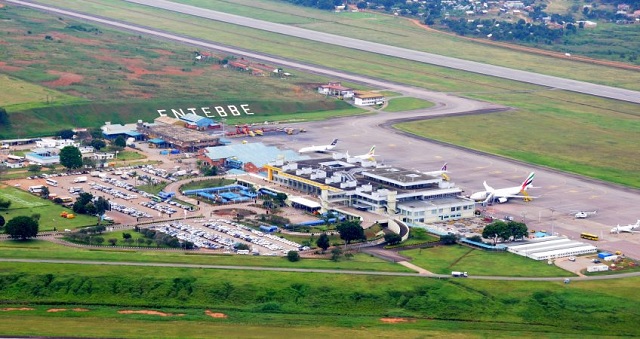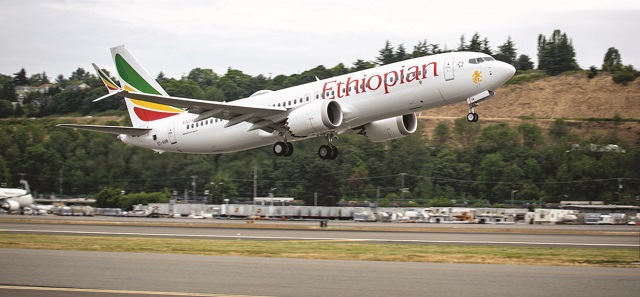
COMMENT | DEREK NSEKO | The global travel industry is roaring back in 2022. Despite some pockets of severe COVID-19 related restrictions and mounting economic pressures resulting from a skyrocketing oil price, travel has been resilient in its efforts for a comeback this year. People simply want to travel again and for now, higher ticket prices caused by the jet fuel price surge are not dampening that enthusiasm.
According to travel-data experts, Forward Keys, Africa is set to record the strongest recovery across the world in Q3 2022 with passenger arrivals reaching 83% of 2019 levels.
At Uganda’s gateway, Entebbe Airport, traffic reached 89.7% of pre-pandemic levels during May, reflecting a trend that has followed easing of travel restrictions elsewhere with pent-up demand driving strong recovery.
Monthly data by the Uganda Civil Aviation Authority CAA, shows that 125,933 international passengers passed through the facility in May 2022. Passenger traffic averaged 4,062 passengers daily during May 2022 versus the pre-pandemic average of 5000 according the authority’s spokesperson, Vianney Luggya.
A closer look at Uganda Airlines in 2022
All the optimism surrounding travel will certainly be good news for the national airline. After a highly publicized re-entry into the East African air transport market in 2019, the COVID pandemic served as a rude awakening but on second thought, could have been perfectly timed for a start-up, allowing the industry to reset, a bit like a Formula One safety car situation.
Today, Uganda Airlines flies to nine countries, serving 11 destinations with 12 routes. A lot has happened and changed at the airline in three years of what seemed like a rotating door at boardroom level. But the appointment of a new board, and most recently a substantive CEO in Jenifer Bamuturaki, could be a long-term fix and one that is crucial for an airline.

Strategic Plan
One of the obvious results of that is the potential for long-term planning and execution. Ethiopia’s Ato Girma Wake, who helped build the juggernaut that is Ethiopian Airlines points to this as an absolute essential ingredient for success. During his tenure, Girma Wake devised a 5-year plan dubbed “vision 2010” which he executed to the letter, turning the national airline billion dollar company for the first time and setting the foundations for the next strategic plan dubbed vision 2025. It was so successfully executed by his successor, Tewolde Gabremariam that by 2020, Ethiopian had already achieved the target of being the largest airline group on the continent and the airline is already drawing up another long term plan to sustain this incredible growth.
It is noteworthy that Ethiopian Airlines is a 75 year old entity and has obviously had its challenges over the years. As the phrase goes, it takes 10 years to become an overnight success.
Uganda’s board chairperson Priscilla Mirembe Serukka has laid out a list of priority areas for the airline in a comment titled “Inside Uganda Airlines’ flourishing revival plan” in The Daily Monitor. It is interesting to see that the airline is looking at creating a clear roadmap for the future.
“The Board will soon launch a five-year strategic plan that will focus on five areas; people, building processes, and systems. The fourth focus area is winning strategic partnerships and stakeholder engagements and lastly finance, investments, and sustainability” she says
Partnerships
A new positive trend emerging out of the pandemic has been the appetite for partnership and collaboration as some airlines fight for survival while others reinvent themselves to take on a new and more sustainable path forward. This year alone, Kenya Airways for example has partnered with numerous airlines including Jetblue, Delta Airlines, Africa World Airlines and more intimately, South African Airways with a view to creating a Pan-Africa group. The Uganda Airlines board Chairperson and previously the current CEO, have both expressed an appreciation for partnerships as a way of the future and it will be interesting to see which airlines the national carrier will find complimentary to its service.
Ground handling
So much has been said about self-handling, and the shareholder has made a significant investment to support this initiative. There is no doubt that the more control the airline achieves across its value chain, the more it can achieve significant cost controls that will positively affect the bottom line. Ideally, the airline should additionally have business units in maintenance and training under its umbrella. These are some of a big cost areas for any airline. According to the board chairperson, the new ground handling project will save 40 percent of the airline’s operational costs at Entebbe International Airport and this, without mentioning the potential for additional revenue.
The Uganda Airlines Fleet
Another area that could make or break the national airline is fleet choice. African airlines have always fallen under the trap of trophy hunting, choosing aircraft that are nothing but a poisoned chalice. Responsible fleet decision making is necessary to retain any potential for profitability. It is now a public secret that the airline is looking for a mid-range aircraft in the 100 to 150 seats market. The actual choice will obviously depend on other internal and external parameters.

Another interesting note around fleet growth is that the airline has recognized the potential for growing a cargo operation. A lesson from the pandemic has been that cargo should be a priority area of an airline’s operation. Airlines such as Ethiopian remained profitable during the pandemic largely due to their strong cargo operations.
The CEO of Astral Aviation, Africa’s largest cargo only airline recently advised that airlines should consider having a cargo representative on their boards to represent this commitment. Uganda Airlines is planning to add dedicated freighter aircraft to its fleet and this has been re-affirmed by the board chairperson.
“The key investment in the new planning cycle is the fleet expansion to include a cargo freighter and a mid-range to bridge the gap between the CRJ and the Airbus fleet,” she says.
The Ugandan tax-payer has invested shs1.6 Trillion (USD 416 Million) in the Uganda Airlines project. It is an investment of significant proportions and obviously one that must be justified. Despite talk of profitability, I believe the realistic outlook of return on investment is a much wider picture that includes the ultimate effect on GDP through the catalytic effects of improved air connectivity.
********
 The writer, Derek Nseko is an aviation expert, a qualified commercial pilot and managing director at iFly Global. He is the founder of Airspace Africa an online publication dedicated to African aviation.
The writer, Derek Nseko is an aviation expert, a qualified commercial pilot and managing director at iFly Global. He is the founder of Airspace Africa an online publication dedicated to African aviation.
derek@airspace-africa.com twitter: @av8r_derek
 The Independent Uganda: You get the Truth we Pay the Price
The Independent Uganda: You get the Truth we Pay the Price



